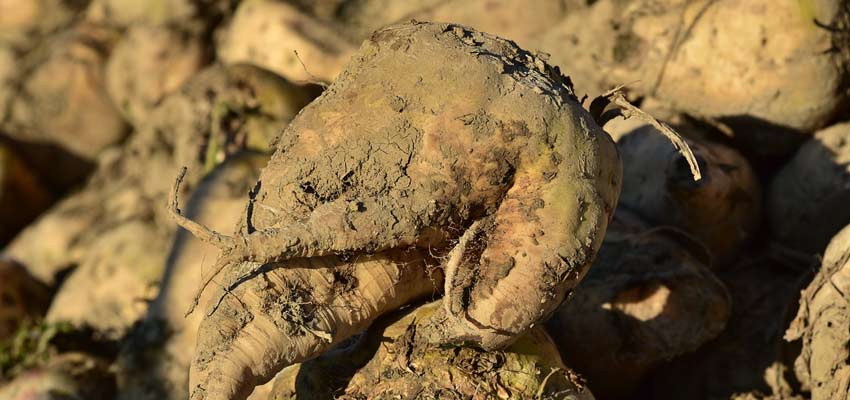The QS and GMP+ quality assurance systems recommend their system partners to pay more attention to possible zearalenone contamination in sugar beet pulp.
In recent weeks, increased levels of the mycotoxin zearalenone (ZEA) have been found in sugar beet products (sugar beet pulp) from the 2018 harvest in Germany. The results varied between <0.1 mg/kg and >10 mg/kg (based on 88% dry matter). Although there are basically no legal limits for ZEA in sugar beet pulp, the EU guideline values for compound feed (e.g. piglet feed: 0.1 mg/kg) could be reached or exceeded in the case of high contamination of the used raw material. In addition, GMP+ defines its own rejection limits for ZEA contents in feed materials that are supplied to livestock farmers for direct feeding (based on 88% dry matter):
- sows and fattening pigs: 0.75 mg/kg
- young pigs: 0.3 mg/kg
- young cattle and dairy cattle: 1.5 mg/kg
The exact cause of the increased ZEA contamination of sugar beet products from the 2018 harvest year is not yet known. It is probably related to the extremely dry weather conditions and possible secondary infections after insect infestation.
The QS and GMP+ quality assurance systems recommend their system partners to pay more attention to possible ZEA contamination in sugar beet pulp and to check the quality of the product by means of laboratory analyses.
Our specialized feed laboratory LUFA-ITL GmbH in Kiel has also been able to detect increased levels of ZEA residues in sugar beet products from the 2018 harvest year, thus confirming the QS and GMP+ reports. We would also be pleased to examine your goods for possible contamination with the mycotoxin zearalenone.
Are you a system partner of QS or GMP+? Our feed laboratory LUFA-ITL GmbH in Kiel is, of course, recognised by both quality assurance systems for the analysis of feed for contaminants.
Further information can be found under the following links:
Autor: Dr. Martin Hanauer

 Contact
Contact

 Contact
Contact Career
Career